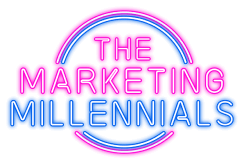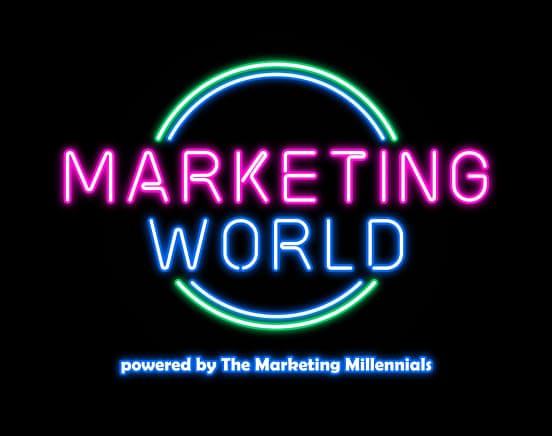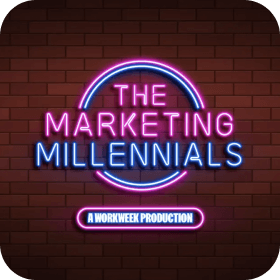Today’s guest is a top-tier Marketer working at a top-tier company (ranked on LinkedIn’s top startups btw).
From working with Fortune 500 companies to innovative tech brands, she is a product Marketing guru, meet Samantha Rideout.
And guess what?? I just interviewed her on The Marketing Millennials Podcast
and she broke down step for step the importance of developing ideal customer profiles and how YOU can do it starting today.
Here’s what Samantha had to say in her own liiiiightly edited words.
1. ICPs, What Are They?:
“ICPs (ideal customer profiles), are a Marketer’s best friend. For B2B Marketers, you’re looking at different company profiles, for B2C Marketers, you’re looking at specific customers who are in that sweet spot right where you want to be.
You can look at it in 3 parts of your target market: (I love this breakdown)
1) TAM, your total addressable market. That’s anyone you could sell to.
2) Buyer personas, the scalable look at different types of people that you’re selling to.
3) ICPs, who are the MVPs (most valuable people). They’re the ones who you’re going to be able to go the furthest with from a business stand point.
Being really specific about where you’re going with one type of person is so much better than just looking at your TAM and trying to target everyone in it.
Zero in multiple times rather than trying to do everything all at once. It’s like when you go to a restaurant, if the menu is 30 pages long, you know they’re not doing sushi and tacos both beautifully (this analogy>>>>).
Have very specific things that you do really well and lean into them.
2. Why ICPs?:
TAM is your first step.
Go from saying, “My audience is everyone.” – which you hear people say this all the time and I’m scared for them. If you believe that your audience is everyone, your audience is probably no one (THIS 1,000x).
You need to look at the critical factors. Can you sell to someone in the UK or Australia? Are there regulatory issues? Are there supply chain issues? Then within that, everyone who you CAN sell to is not necessarily a good fit for your product.
Level up your marketing game
Zero BS. Just fun, unfiltered, industry insights with the game-changers behind some of the coolest companies from around the globe.
No spam. Unsubscribe any time.
Get a little bit more sophisticated.
You have different demographics for people, different values, influences. It helps you reach people more effectively if those are defined. Your ICPs are your most loyal customers and highest lifetime value.
For companies like Slack, 40% of their revenue comes from the top 1% of their accounts (ouuuuu ok!!).
How does this relate to your business? Look at all of your customers. For some it takes a lot more work to land them. Your Marketing funnel is long, your sales funnel is long, and once you have them, servicing the accounts is a lot less efficient than other clients accounts.
So, when you’re looking at who they are, and you start to understand why those people aren’t such a great fit, that’s where the magic happens.
You can then be more strategic with who you’re Marketing to, you create more ideal customers, and can market to those ideal customers in an efficient way. (And we LOVEEE efficiency.)
3. Figure Out Your ICPs:
Go to the data, customer feedback is really important.
If you talk to strategic accounts or your data team, I’m sure they have a great idea of who their ideal customer is and why they’re the ideal customer.
But as the famous Henry Ford quote goes, if he had asked people what they wanted, they would have said faster horses. As important as that customer feedback is, it sometimes doesn’t have as much sophistication as the data. (LOL, this is an awesome reference.)
When I’m talking to other Marketers about this it can be scary, because they have so much data but it’s rarely integrated. There’s a dashboard here, a spreadsheet there, and trying to bring all of it together can be really overwhelming (I’ve been there beforeeee).
Here’s a cheat sheet, go through referrals. Who has been a referring customer? What have they been saying about us? Or if you’re B2C, look at your testimonials. Look at deal size, net promoter score, time and cost to close, cross sell value, and what different products across the suite are they engaged with?
That’s your first look at the data. Then try to develop a story from those things.
Take that information, go to strategic accounts, show them your top net promoter scores, top deal size, and maybe that they took long to close and it cost a ton.
Work with them to understand what happened there, and at the same time it’s important to look to the future with this. Identify your roadmap, but let’s say there’s a group of ideal customers that are engaged right now, however it doesn’t really seem like you’re moving in the same direction as them.
Is that a risk for your business? How do you grow with your current ideal customers to serve them better, but also 3 years from now have a sustainable business?
It’s all about figuring out what your data tells you versus what people internally feel like is the opportunity or is the ideal customer.
(That’s where you get to that sustainable growth model, where it’s not just guessing why people are good customers, it’s knowing definitively and then being able to brainstorm strategically around that.)
4. The 2 Most Exciting Things:
The 2 most exciting things for Marketing, once you have it well defined and current, Is first figuring out how to be hyper targeted with your Marketing. You can be a lot more effective with your budget when you know exactly who you’re going after.
The second is being able to tailor those Marketing journeys even into the sales journey.
Now you can look through some of your ideal customers and see what they downloaded, or what case study they saw, and then they got a sales demo after.
That will allow you to be able to put those further up in the Marketing funnel, shortening your time and cost to close.
Then you can also look at your sales funnel to see what obstacles were there. What were some of the objections? What were the concerns? Any miscommunications? What did we waste sales energy on later in the funnel in terms of education and how can we incorporate that into the Marketing funnel?
Then you’re giving sales higher qualified leads versus hoping for the best (which we DON’T want).
Hyper targeted Marketing and the curated customer journeys are the 2 most exciting things that you can do from a Marketing perspective once you have your ICPs clearly defined.
5. You’re Falling Into This Trap:
The more targeted your audience is, the more targeted your messaging can be (my life motto right there).
It makes everything more effective.
Something that we see as Marketers all the time regardless of industry or company size, is opportunities will come up, whether it’s your competitor doing something cool, your executive team thinking you should do something flashy or a random idea someone has.
You can’t do everything, at least not well.
You can get stuck in these races where you’re running after something that seems exciting right now to an executive or is an exciting growth opportunity that sales wants to run, but having those ideal customer profiles keeps you focused on the right things.
Even if there’s a low hanging fruit type opportunity like stealing some market share from a competitor, if you keep chasing that kind of stuff, you’re not going to get to the sustainable growth that you really want.
You might get more revenue, but you’re going to have to focus more resources on those things that don’t really align with where you want to be in 5 or 10 years.
ICPs will really help with the whole trajectory of your go to market strategy. (MHMM.)”



